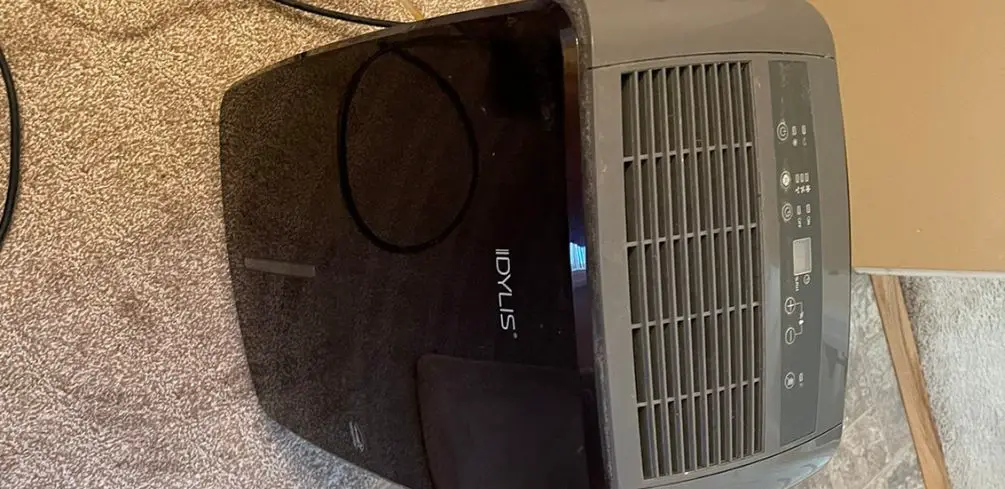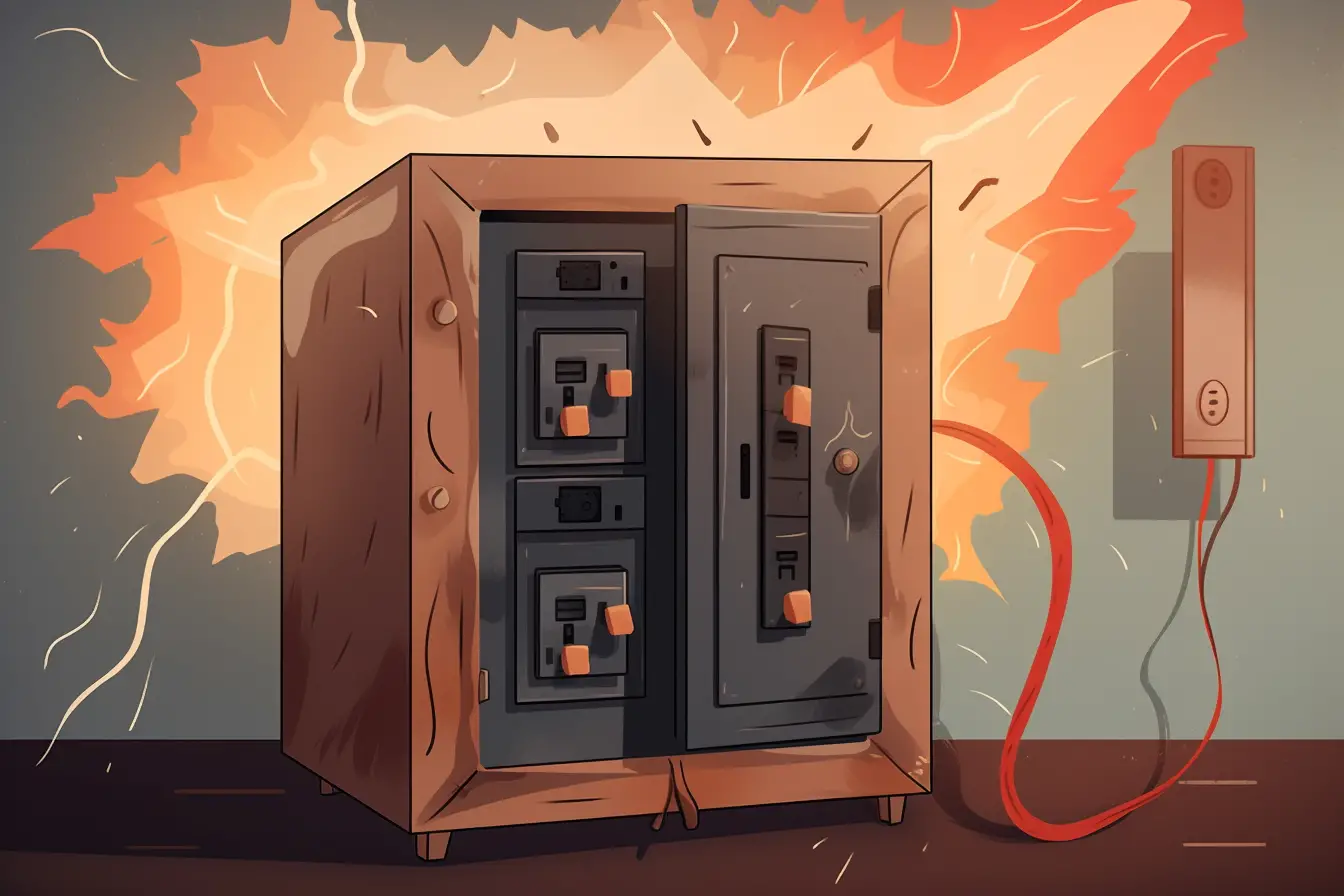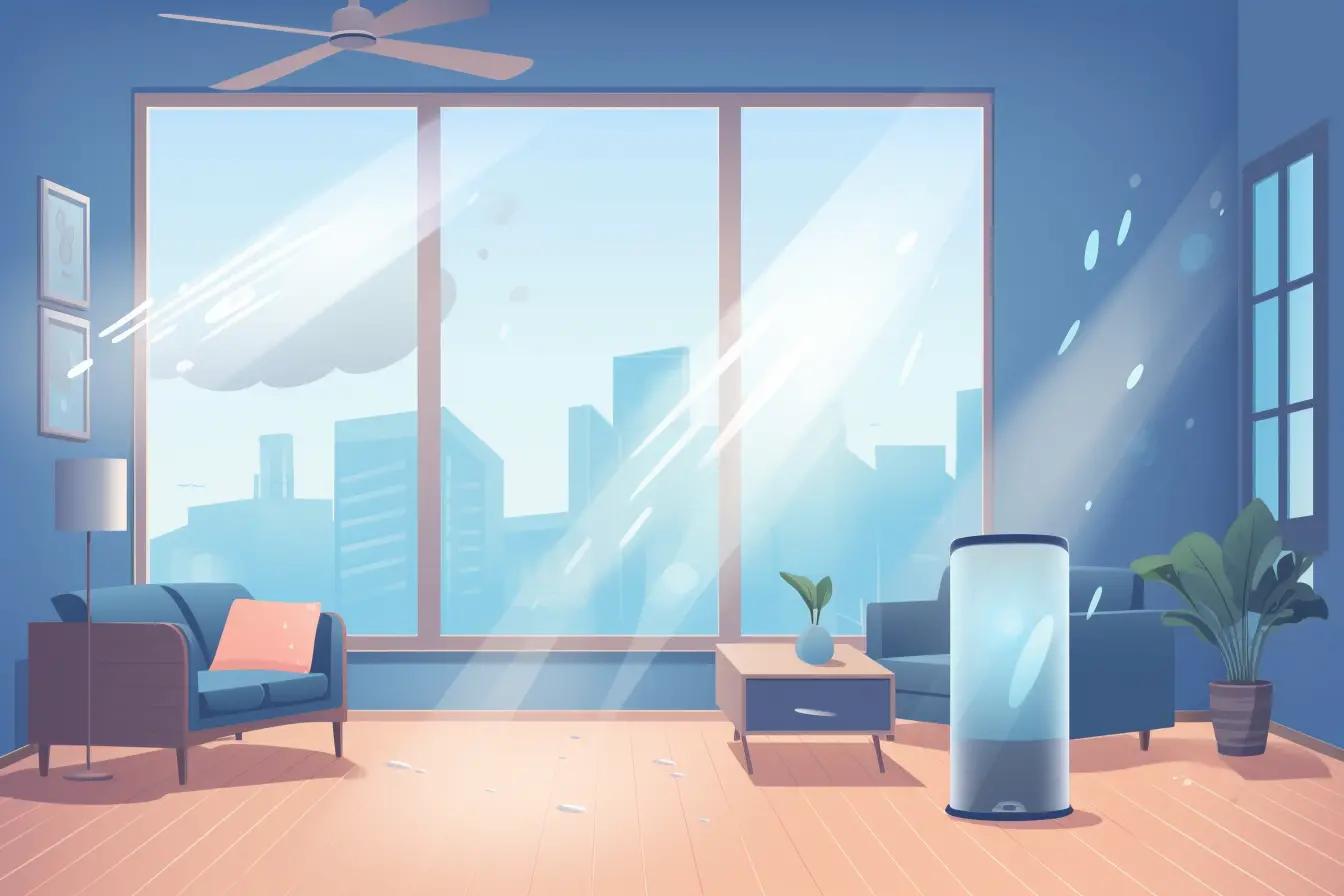A dehumidifier will really help indoor air quality by removing excess moisture from the air. The question we get asked all the time is, “how many dehumidifiers do I need for my house”?
I will break it down as there are no straightforward answers, so it depends. The good news is this article will help you identify exactly what you need.
Lots of factors come into play when getting the right sized dehumidifier. As a general rule, measure the room and find out the square footage. Then use the chart below, which will help when buying dehumidifiers. Don’t forget to add the relative humidity and other factors to the pint dehumidifier you choose.
What does a dehumidifier do?
A house dehumidifier will take the excess water that is in the air and remove moisture. Then it runs the air over a heated coil and adds the dry air to the room.
This is important as some of the benefits include stopping the following:
- Mold
- Dust mites
- Mildew
- Musty smell
- Decay and rust
Quick Tip: a Dehumidifiers will extract moisture from the air.
How Many Dehumidifiers Do I Need for My House
As mentioned above, it depends. Here we will break it down so you can figure out exactly what is needed for your house. Before we go over the factors, let’s determine if you even need one for your house.
Do you even need a dehumidifier?
Do you need all the rooms in your home? Usually, the answer is no, unless you live in a wetter climate. The best way to gauge this is by purchasing a humidity meter so you can see what the air quality is in each room. These are relatively inexpensive and can read the humid air within seconds.
The one I purchased even shows a smiley face if the air is good, then a sad face if the air is wet or dry, and it will tell you on the meter which it is. If the air is dry, then you would need a humidifier which is the opposite and puts water into the air.
Having one of these, you can walk through each room and see what the readings are. Keep in mind different seasons, like winter and summer, will have different results.
The main spots that need a dehumidifier are:
- Basement
- Bathroom
- Laundry room
- Kitchen
- Crawl space
- Any room with wet spots on the walls or ceiling.
Now that you figured out which areas need help with the humidity levels let’s talk about how to choose the correct one.
Choosing the right dehumidifier size
Whole House dehumidifiers
First, if you have determined that every room needs a dehumidifier, then you may want to go with a whole house dehumidifier. A whole house dehumidifier is very expensive as it will tie into your existing HVAC system and drain for excess moisture and water removal.
Having only one dehumidifier for the entire house could cost around $5,000, and you would need to get it professionally installed.
What Size dehumidifier do I need per room
Portable dehumidifiers or stand-alone
Next, are you more interested in moving the dehumidifier around to different rooms, or do you want only one room per dehumidifier? Having portable dehumidifiers really does help.
Some come on wheels if it is a larger dehumidifier and usually removes the moisture from the air much quicker. Not to mention the more you are spending, the better they will be at their job and have a better chance to be energy efficient, which will save you money in the long run.
If you rather get two dehumidifiers, for example, instead of one dehumidifier that has better qualities, then you won’t have to move it, but it may not have an as long a service life.
Don’t forget you are already going to have to remove the water tank every time it is filled. This will depend on the tank capacity of the machine you purchase. The largest ones have a higher tank capacity.
The bigger capacity doesn’t really mean you will have to empty the drained water less often. It really depends on the humidity level of the air. If there is more moisture than usual, these machines could be emptied twice a day, assuming you are running them frequently.

Find the dehumidifier size needed
To find out the dehumidifier, you will need to use a tape measure and get the square footage of the room.
To measure the square feet of the room, take the width and length, then multiply them together. Here is a quick example:
10 Feet Long x 15 Feet Wide = 150 sq ft
Now that we have the square footage, we can determine the one you need, but the dehumidifier size chart:
| Water Removed | Square Feet Coverage |
|---|---|
| Ounces | Less than 1,000 sq ft |
| 20 Pints | 1,000 – 1,500 sq ft |
| 50 Pints | 3,500 – 4,200 sq ft |
| 70 Pints | 4,500 – 5,700 sq ft |
This will give you a great estimate. Of course, if you are in major or moderately damp areas, this can change.
Moisture in the air
The next factor is the humidity levels of the house and how many units you will purchase. If you go with a portable one with a larger physical size, these dehumidifiers work great, and this is the route I have gone.
I only have two rooms that have issues, a bathroom and a basement. Since the bathroom is a small space, it doesn’t take long to remove the moisture, and I can then move it back to the basement. Since it is a higher capacity machine, it is the perfect unit for me.
Here are some factors to take into place. Now that you have your square feet add the following as needed
- Add 10 pints if the home is located in a humid climate
- Add 5 pints if a lot of people are living in the home
- Add 5 pints if you have an excess of windows and doors in the home
- Add 5 pints when near a washer and dryer
To choose the right size dehumidifier, let’s go over the main options:
- 20 Pints – About 1,500 sq ft
- 50 Pints – About 3,500 – 4,000 sq ft
- 70 Pints – About 4,500 sq ft
If your room is smaller than 1,500 sq ft, then you can buy one in ounces. The great thing is most dehumidifiers already give you an idea of the big space they cover.
If you will move the unit around, make sure to get a large capacity dehumidifier to quickly remove the excess humidity so it can be moved to another room.
The number you want to hit on the screen is between 30-60 %RH, but most go towards 30% RH as a final result.

Extra Features to Look for In a Dehumidifier

Here are some features to look for when purchasing a dehumidifier.
- Humidity level Meter – Shows how much moisture and the air quality.
- Auto Turn Off or Humidistat – Turns off when the air quality reaches the desired level.
- Capture Tank Full Indicator – This shows a light when it’s time to empty the water tank.
- Wheels – If you want to move it around, wheels help a lot.
- Tube drain – Some have a tube that is connecting, so you can put it right in the sink or next to a drain, and you won’t have to worry about emptying the water.
- Bacteria repellent – Certain dehumidifiers have an antimicrobial coating that stops bacteria.
- Sound – How loud a machine is. Some of these can get very loud if the capture bucket capacity is very large. First, check reviews before purchasing.
Conclusion
When figuring out how many dehumidifiers you need, make sure to do your research. If you choose too large and run too long, it will make the air excessively dry, causing dry skin irritations. This could not be an issue if the dehumidifier has a relative humidity level shut off
If you choose too small, the area can stay damp and smell musty. That’s why you want to go over these factors and make sure you choose the basement dehumidifier you need at the right capacity.
I hope this helped get you the dehumidifier you need, I know I am happy with the one I purchased.
Please be careful and use at your own risk
None of the authors, contributors, administrators, or anyone else connected with Wild Fog, in any way whatsoever, can be responsible for your use of the information contained in or linked from these web pages.









